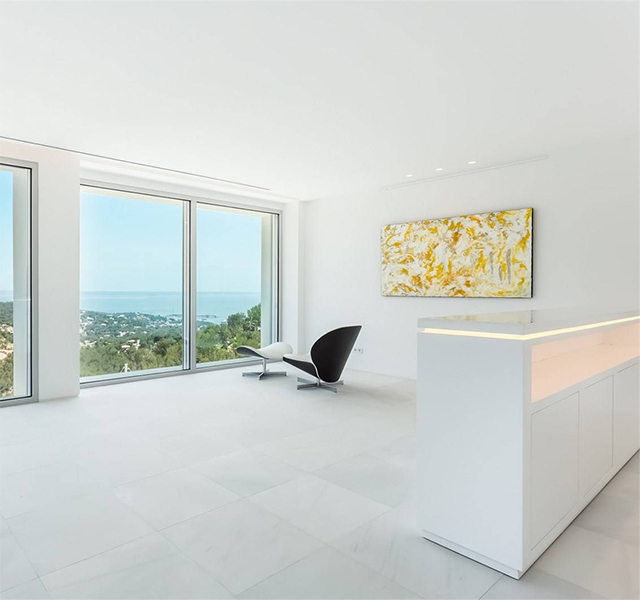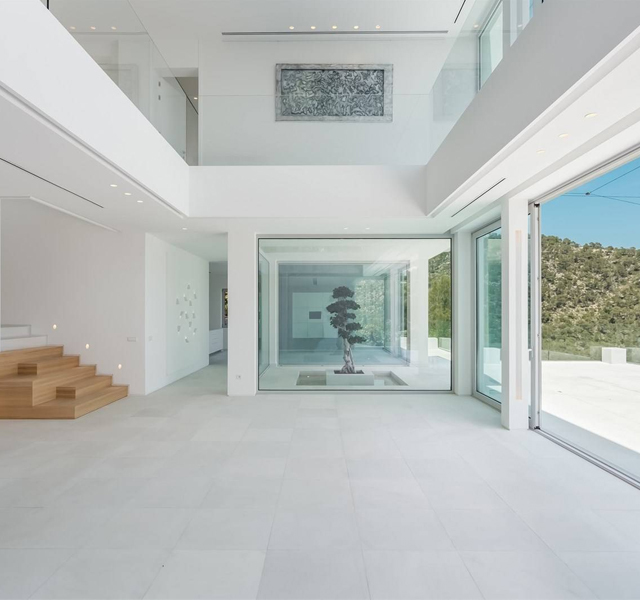Inman News and Sotheby’s International Realty
There is a fantastic mystery attached to minimalism: it encourages reflection, thought, restraint and smart conversation. This is especially true when it comes to designing a minimalist home. Where so often there is a tendency to fill a space, clean, minimalist residences rely on the consideration of light patterns, conservation, and intuition, among other details.
While a perfect blank canvas can be hard to come by, the design principles of minimalism can transform any space into a purposeful retreat. Apply these rules of thumb when sourcing or envisioning the potential of a new understated home.
Start with the philosophy of minimalist design
Finding an identity or philosophy for a new space can come about a few ways. It may surface from a historical or local context, maybe it stems from an entire culture — like Elysium, a “place of happiness” — or perhaps it comes from a design principle such as wabi-sabi, which encourages its subjects to embrace the beauty in imperfection (cracks, scratches and a warm, visible wearing-out process are encouraged). However a person decides to shape his or her space, ensure there is a unifying principle holding the home together.
From there, look at the layout of the home. Minimalist living eschews ostentation for a focus on views and functionality. Take every opportunity to create open-space living areas by removing walls and prioritizing streamlined storage. In larger spaces, flow is secondary to purpose-led rooms and circles back to questions of use and atmosphere: how are people living in their spaces? How much time do they spend there? What elevates these rooms, hallways or yards? Light, sound, openness? Long hallways allow for more movement; the soft curve of a staircase brings in organic form; scattered floating shelves nod to a love of linear art.
Create space and embrace nature
Eliminating distraction is paramount to calm spaces. The items people display should offer a sense of tranquility. Because minimalism is a curated style, it’s the abundance of uninterrupted lines — and intentional remaining possessions — that sets this kind of home apart. Storage is paramount.
Pay attention to when and where the light lands in a space as well, and preserve existing natural elements. Don’t uproot foliage unless absolutely necessary: minimalism doesn’t necessarily speak to a starkness, but rather an interest in working with what is simplest. When it comes to landscaping, minimalism may mean leaving a towering oak exactly where it is. Working greenery into a recessed wall façade or interior courtyard is also a good way to easily invite in the outdoors.
Source local materials
Time and again we hear of fine materials being sourced from all over the globe. While craftspeople and artisans are not always easily centralized for our convenience, there is something to be said for going on a hunt for local raw materials. It’s an investment of time, but one that can result in a rewarding design scheme that reflects a home’s true surroundings. Eco-considerations also come into play in sourcing — the materials you choose have the ability to make an impact.
Additional design direction may seem more obvious: with pared-back color and a commitment to neutrals, natural materials will shine. Carry this style throughout a space via metal accents, subtle lighting design, and breezy fabric choices. In these simple spaces, distraction is gone, giving people room to breathe and tap back into themselves.


